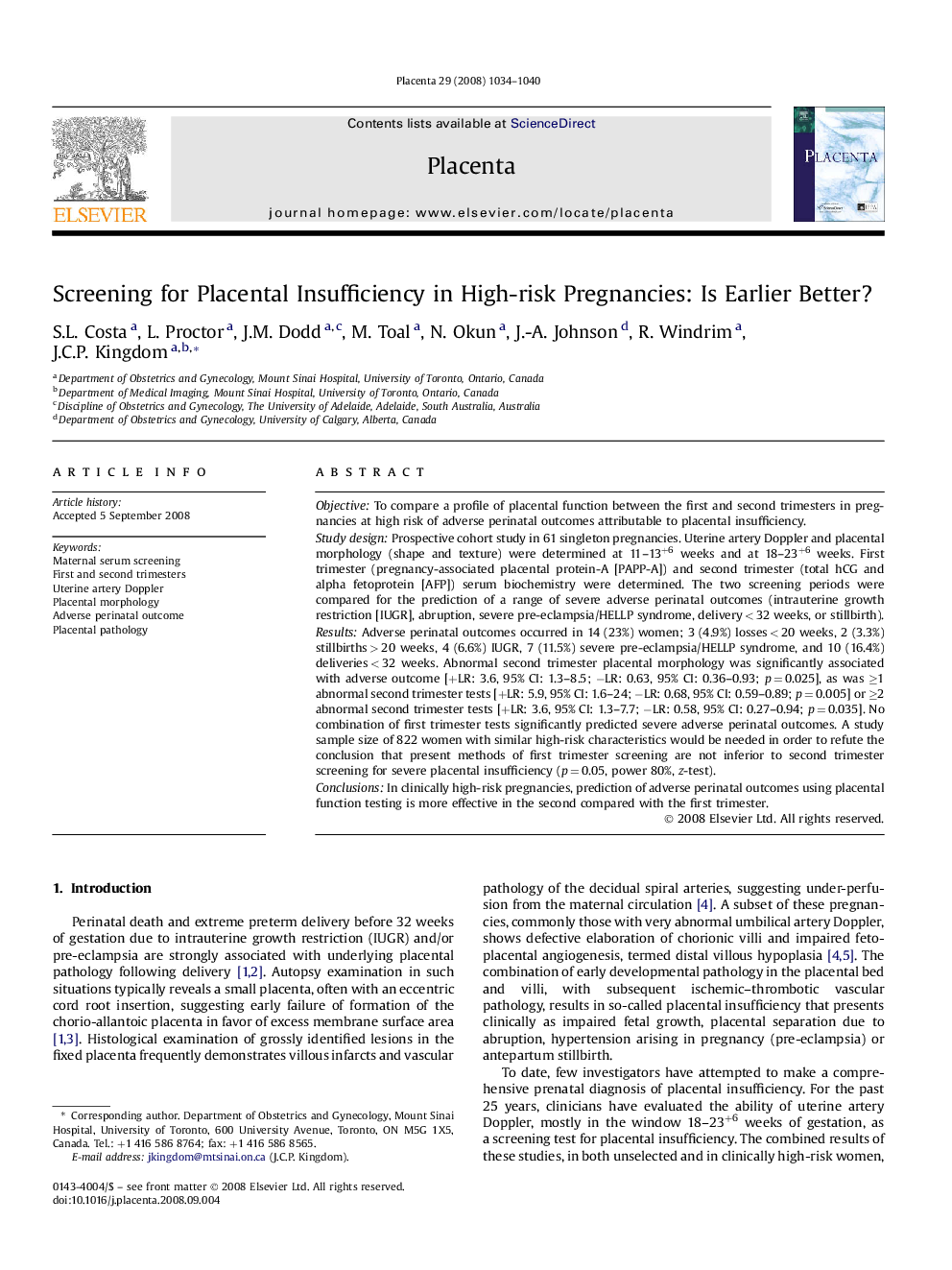| کد مقاله | کد نشریه | سال انتشار | مقاله انگلیسی | نسخه تمام متن |
|---|---|---|---|---|
| 2789503 | 1154510 | 2008 | 7 صفحه PDF | دانلود رایگان |

ObjectiveTo compare a profile of placental function between the first and second trimesters in pregnancies at high risk of adverse perinatal outcomes attributable to placental insufficiency.Study designProspective cohort study in 61 singleton pregnancies. Uterine artery Doppler and placental morphology (shape and texture) were determined at 11–13+6 weeks and at 18–23+6 weeks. First trimester (pregnancy-associated placental protein-A [PAPP-A]) and second trimester (total hCG and alpha fetoprotein [AFP]) serum biochemistry were determined. The two screening periods were compared for the prediction of a range of severe adverse perinatal outcomes (intrauterine growth restriction [IUGR], abruption, severe pre-eclampsia/HELLP syndrome, delivery < 32 weeks, or stillbirth).ResultsAdverse perinatal outcomes occurred in 14 (23%) women; 3 (4.9%) losses < 20 weeks, 2 (3.3%) stillbirths > 20 weeks, 4 (6.6%) IUGR, 7 (11.5%) severe pre-eclampsia/HELLP syndrome, and 10 (16.4%) deliveries < 32 weeks. Abnormal second trimester placental morphology was significantly associated with adverse outcome [+LR: 3.6, 95% CI: 1.3–8.5; −LR: 0.63, 95% CI: 0.36–0.93; p = 0.025], as was ≥1 abnormal second trimester tests [+LR: 5.9, 95% CI: 1.6–24; −LR: 0.68, 95% CI: 0.59–0.89; p = 0.005] or ≥2 abnormal second trimester tests [+LR: 3.6, 95% CI: 1.3–7.7; −LR: 0.58, 95% CI: 0.27–0.94; p = 0.035]. No combination of first trimester tests significantly predicted severe adverse perinatal outcomes. A study sample size of 822 women with similar high-risk characteristics would be needed in order to refute the conclusion that present methods of first trimester screening are not inferior to second trimester screening for severe placental insufficiency (p = 0.05, power 80%, z-test).ConclusionsIn clinically high-risk pregnancies, prediction of adverse perinatal outcomes using placental function testing is more effective in the second compared with the first trimester.
Journal: Placenta - Volume 29, Issue 12, December 2008, Pages 1034–1040